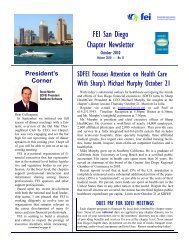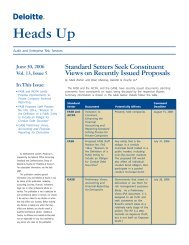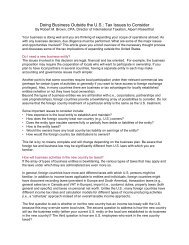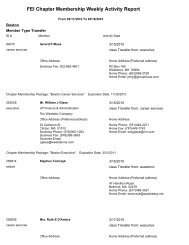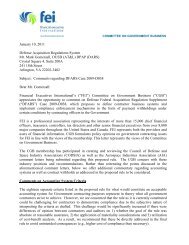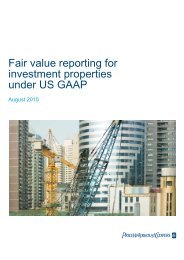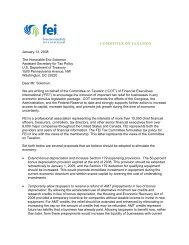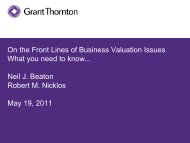U.S. GAAP v. IFRS: The Basics - Financial Executives International
U.S. GAAP v. IFRS: The Basics - Financial Executives International
U.S. GAAP v. IFRS: The Basics - Financial Executives International
Create successful ePaper yourself
Turn your PDF publications into a flip-book with our unique Google optimized e-Paper software.
Preparation of<br />
consolidated financial<br />
statements — general<br />
Preparation of<br />
consolidated financial<br />
statements — different<br />
reporting dates of parent<br />
and subsidiary(ies)<br />
Presentation of<br />
noncontrolling or<br />
“minority” interest<br />
Equity method<br />
investments<br />
U.S. <strong>GAAP</strong> <strong>IFRS</strong><br />
Required. Generally required, but there is a limited<br />
exemption from preparing consolidated financial<br />
statements for a parent company that is itself a<br />
wholly-owned subsidiary, or is a partially-owned<br />
subsidiary if certain conditions are met.<br />
<strong>The</strong> effects of significant events occurring<br />
between the reporting dates when different<br />
dates are used are disclosed in the financial<br />
statements.<br />
Presented outside of equity on the balance<br />
sheet.<br />
FAS 159 <strong>The</strong> Fair Value Option for <strong>Financial</strong><br />
Assets and <strong>Financial</strong> Liabilities gives entities<br />
the option to account for their equity method<br />
investments at fair value (FAS 159 is effective<br />
for fiscal years beginning after November 15,<br />
2007, with early adoption permitted, subject to<br />
certain conditions). For those equity method<br />
investments for which management does not<br />
elect to use the fair value option, the equity<br />
method of accounting is required.<br />
Joint ventures Generally accounted for using the equity<br />
method of accounting, with the limited<br />
exception of unincorporated entities<br />
operating in certain industries which may<br />
follow proportionate consolidation.<br />
Convergence<br />
<strong>The</strong> effects of significant events occurring<br />
between the reporting dates when different<br />
dates are used are adjusted for in the<br />
financial statements.<br />
Presented as a separate component in equity<br />
on the balance sheet.<br />
IAS 28 requires investors (other than venture<br />
capital organizations, mutual funds, unit<br />
trusts, and similar entities) to use the equity<br />
method of accounting for such investments in<br />
consolidated financial statements.<br />
If separate financial statements are<br />
presented (that is, those presented by<br />
a parent or investor), subsidiaries and<br />
associates can be accounted for at either<br />
cost or fair value.<br />
IAS 31 Investments in Joint Ventures permits<br />
either the proportionate consolidation<br />
method or the equity method of accounting.<br />
<strong>The</strong> FASB and the IASB have a current joint project to address the accounting and reporting of<br />
noncontrolling (or minority) interests in subsidiaries. Both Boards issued an exposure draft in 2005,<br />
and are expected to issue final standards imminently. <strong>The</strong> new standards are expected to eliminate<br />
primarily all of the differences between U.S. <strong>GAAP</strong> and <strong>IFRS</strong> pertaining to the accounting and<br />
reporting of noncontrolling interests. In addition, the IASB recently issued an exposure draft that<br />
proposes the elimination of proportionate consolidation for joint ventures.<br />
7



